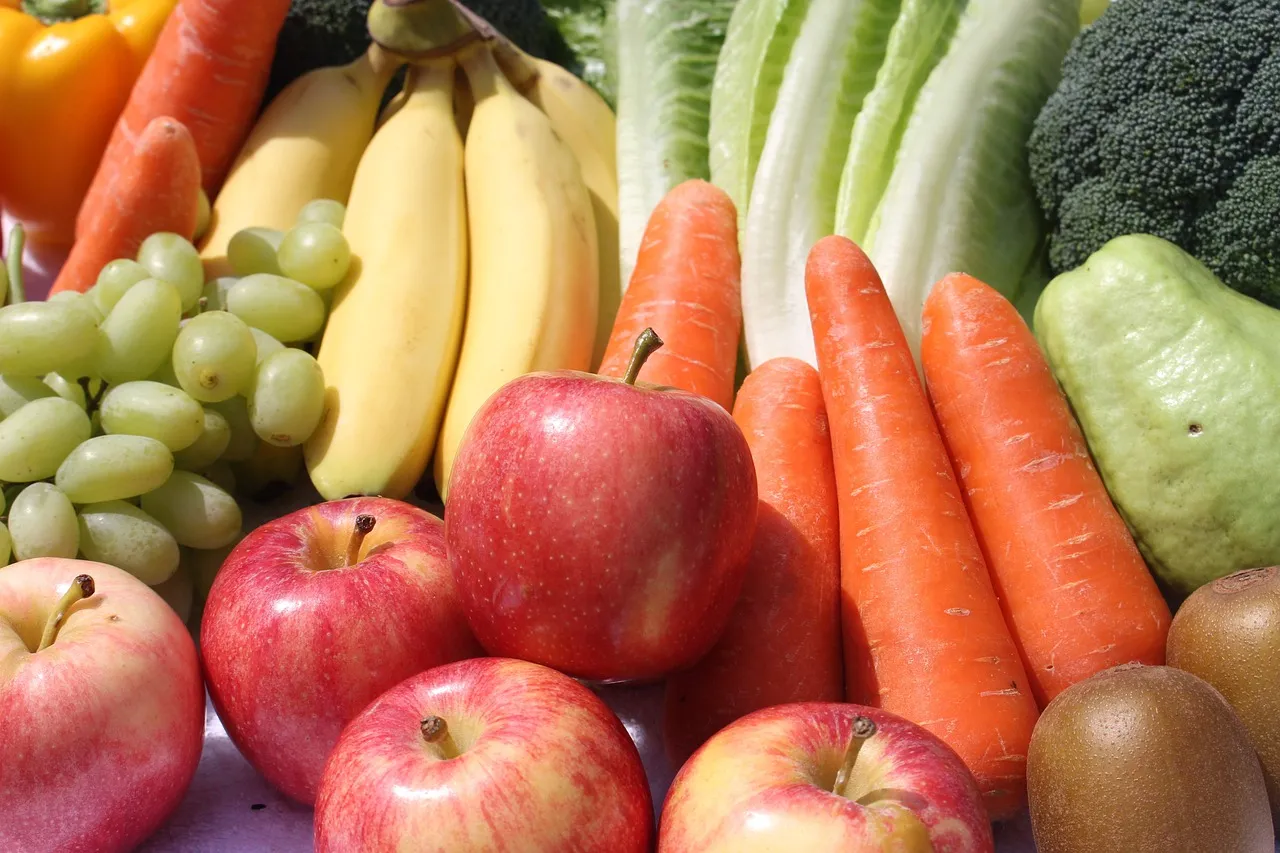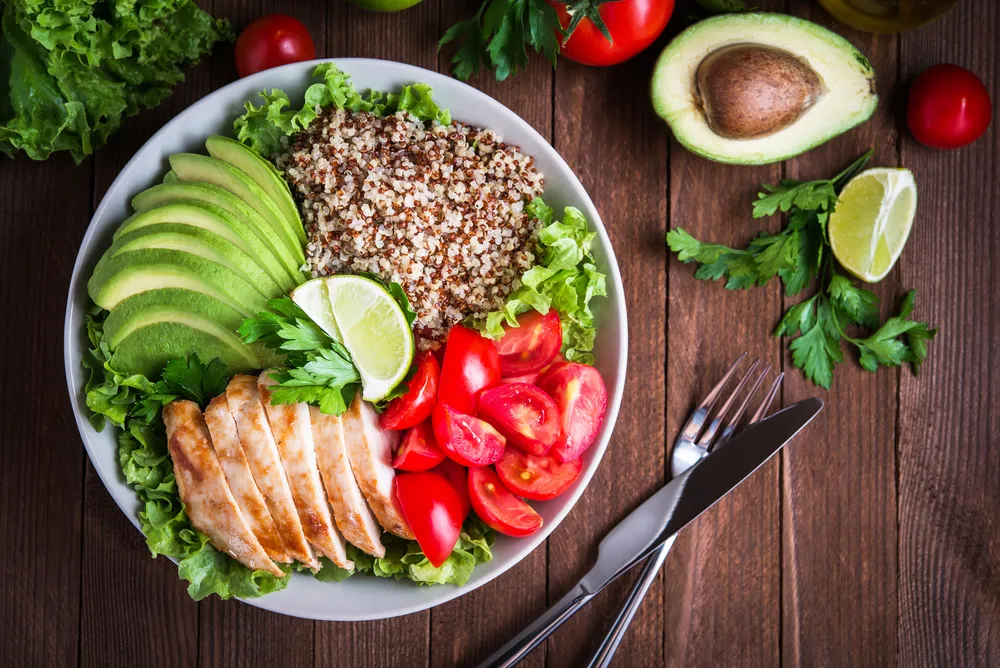
Introduction
Health is the cornerstone of a fulfilling life. Achieving optimal health depends heavily on a balanced diet, where fruits and vegetables play a pivotal role. These natural foods are not only delicious but also provide an array of essential nutrients that our bodies need daily. From boosting immunity to reducing the risk of chronic diseases, fruits and vegetables are indispensable in maintaining overall well-being. However, in today’s fast-paced world, many individuals struggle to meet the recommended daily intake of these vital food groups, leading to preventable health issues.
This article explores the immense benefits of consuming fruits and vegetables daily, practical strategies for incorporating them into meals, and global perspectives on their importance.
Chapter 1: Why Are Fruits and Vegetables Essential for Health?
1. A Treasure Trove of Nutrients
Fruits and vegetables are rich sources of essential vitamins and minerals, acting as building blocks for the body:
- Vitamins: Fruits like oranges and mangoes are high in Vitamin C, which supports collagen production and strengthens the immune system. Leafy greens such as spinach and kale are packed with Vitamin K, vital for blood clotting and bone health.
- Minerals: Vegetables like broccoli and bananas are excellent sources of potassium, which regulates blood pressure and maintains electrolyte balance.
Moreover, these foods contain trace elements like selenium and zinc that are critical for metabolic processes. Consuming a variety of fruits and vegetables ensures that your body receives a wide spectrum of nutrients for optimal function.
2. High Antioxidant Content
Antioxidants such as flavonoids, carotenoids, and polyphenols are abundant in fruits and vegetables. These compounds neutralize free radicals, which are unstable molecules that can damage cells and accelerate aging. Scientific studies highlight that diets rich in antioxidants lower the risk of chronic conditions like heart disease, diabetes, and certain cancers. For example, berries, rich in anthocyanins, are known to improve brain health and memory.
3. Fiber for Digestive Health
Dietary fiber is another significant component of . It promotes healthy digestion by facilitating bowel movements, preventing constipation, and nurturing beneficial gut bacteria. Additionally, fiber helps regulate blood sugar levels, making it essential for individuals with or at risk of diabetes.
Chapter 2: The Health Benefits of Eating Fruits and Vegetables Daily
Eating fruits and vegetables consistently has far-reaching health benefits:
| Benefit | Explanation | Examples |
|---|---|---|
| Improves Heart Health | A diet high in potassium-rich foods helps lower blood pressure and reduce cholesterol. | Berries, spinach, avocados |
| Boosts Immunity | Nutrients like Vitamin C enhance the production of white blood cells, which fight infections. | Citrus fruits, bell peppers, broccoli |
| Enhances Mental Health | Certain antioxidants reduce inflammation and oxidative stress in the brain, improving mood. | Blueberries, walnuts, dark leafy greens |
| Supports Weight Loss | Low in calories but high in volume and fiber, they help you feel full longer. | Apples, cucumbers, carrots |
| Protects Vision | Carotenoids like lutein and zeaxanthin in vegetables protect against macular degeneration. | Spinach, kale, orange bell peppers |
These benefits underline the holistic impact of on human health, making them irreplaceable in a balanced diet.
Chapter 3: How to Incorporate More Fruits and Vegetables into Your Diet
1. Start Small
For individuals who find it challenging to include fruits and vegetables, starting with small, manageable changes can make a difference. Add an apple or a handful of baby carrots to your lunchbox.
2. Make Them Accessible
Keeping fruits washed and within reach can encourage healthier snacking habits. Similarly, pre-cut vegetables stored in the fridge make meal prep easier.
3. Diversify Your Plate
Variety is the key to maintaining interest and ensuring a broad nutrient intake. Try incorporating exotic fruits like dragon fruit or papaya and unique vegetables like bok choy or artichokes into your meals.
4. Experiment with Cooking Styles
Steaming, grilling, and roasting bring out the natural flavors of vegetables. You can also puree fruits and vegetables into soups or sauces for a flavorful twist.
5. Plan Meals Around Seasonal Produce
Eating seasonally not only enhances flavor but is also more economical. For example, enjoy watermelon in the summer and hearty root vegetables like sweet potatoes in the winter.
Chapter 4: Global Perspectives and Challenges
1. WHO Recommendations
The World Health Organization (WHO) recommends consuming at least 400 grams of fruits and vegetables daily. However, many countries report lower consumption rates due to various barriers.
2. Global Statistics
- In the United States, less than 10% of adults meet the recommended daily intake.
- European countries show better compliance, with Mediterranean diets incorporating a significant amount of fresh produce.
- Developing nations often face challenges like limited access, affordability, and cultural food preferences that hinder consumption.
3. Addressing Barriers
- Economic Constraints: Community gardens and local farmers’ markets can provide affordable produce.
- Awareness Campaigns: Educational programs emphasizing the importance of can influence public behavior.
Chapter 5: Tips for a Healthier Lifestyle
1. Build a Routine
Set a goal to include at least one fruit or vegetable with every meal. For instance, start your day with a smoothie, have a salad with lunch, and include roasted vegetables with dinner.
2. Involve the Family
Make healthy eating a family activity. Cooking together can inspire kids to try new fruits and vegetables.
3. Monitor Progress
Keep track of your fruit and vegetable intake to ensure you meet daily requirements. Apps and food diaries can help in this regard.
Conclusion
are more than just dietary staples; they are powerful allies in the quest for a healthier, longer life. Incorporating them into your diet daily ensures a robust immune system, better mental health, and a lower risk of chronic diseases. While challenges exist, with awareness and effort, adopting a diet rich in these natural wonders is achievable for everyone.
Call to Action
Start today! Add a colorful mix of fruits & vegetables to your plate and experience the transformation they bring to your health and energy levels.









